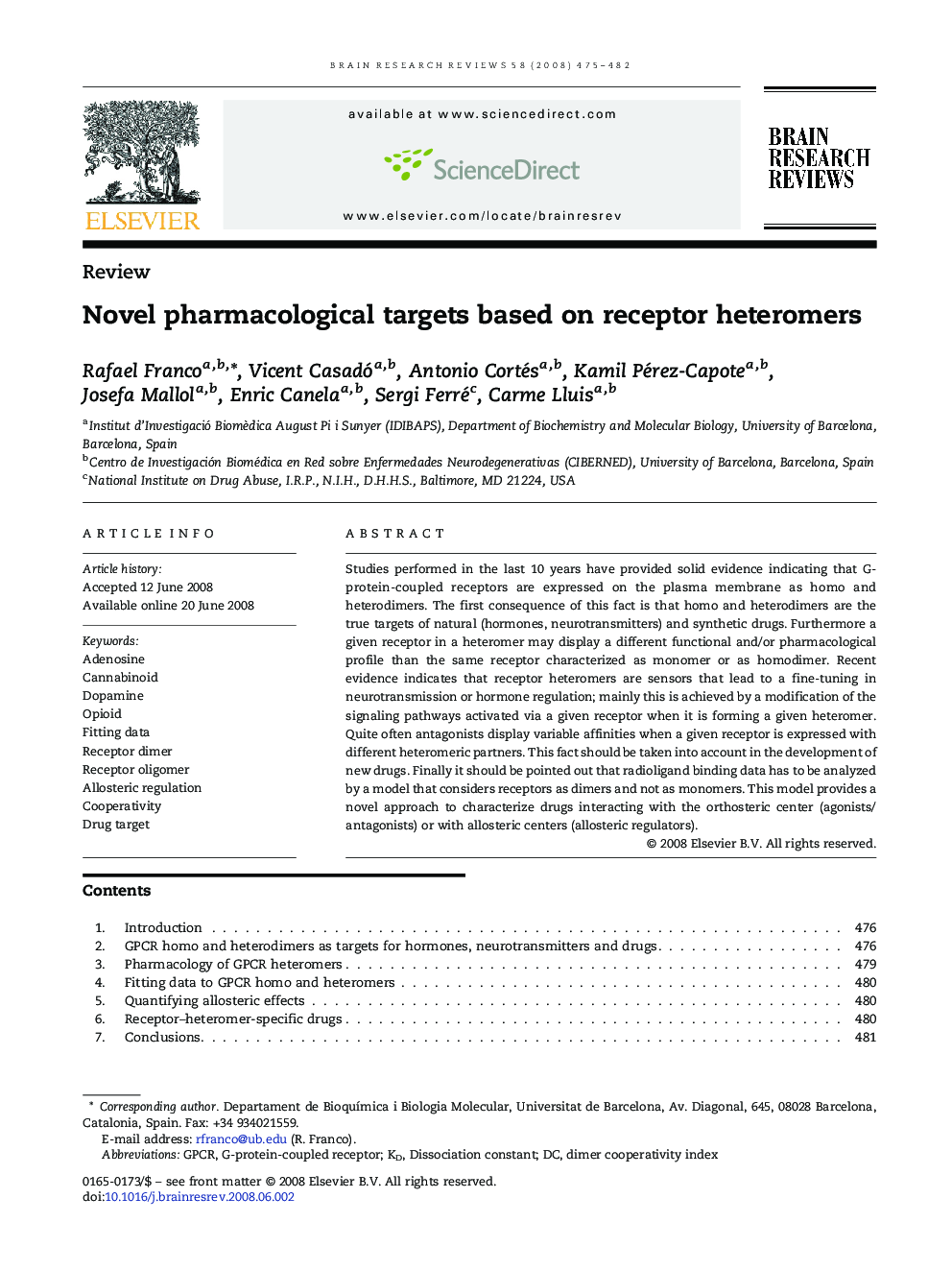| Article ID | Journal | Published Year | Pages | File Type |
|---|---|---|---|---|
| 4333876 | Brain Research Reviews | 2008 | 8 Pages |
Studies performed in the last 10 years have provided solid evidence indicating that G-protein-coupled receptors are expressed on the plasma membrane as homo and heterodimers. The first consequence of this fact is that homo and heterodimers are the true targets of natural (hormones, neurotransmitters) and synthetic drugs. Furthermore a given receptor in a heteromer may display a different functional and/or pharmacological profile than the same receptor characterized as monomer or as homodimer. Recent evidence indicates that receptor heteromers are sensors that lead to a fine-tuning in neurotransmission or hormone regulation; mainly this is achieved by a modification of the signaling pathways activated via a given receptor when it is forming a given heteromer. Quite often antagonists display variable affinities when a given receptor is expressed with different heteromeric partners. This fact should be taken into account in the development of new drugs. Finally it should be pointed out that radioligand binding data has to be analyzed by a model that considers receptors as dimers and not as monomers. This model provides a novel approach to characterize drugs interacting with the orthosteric center (agonists/antagonists) or with allosteric centers (allosteric regulators).
